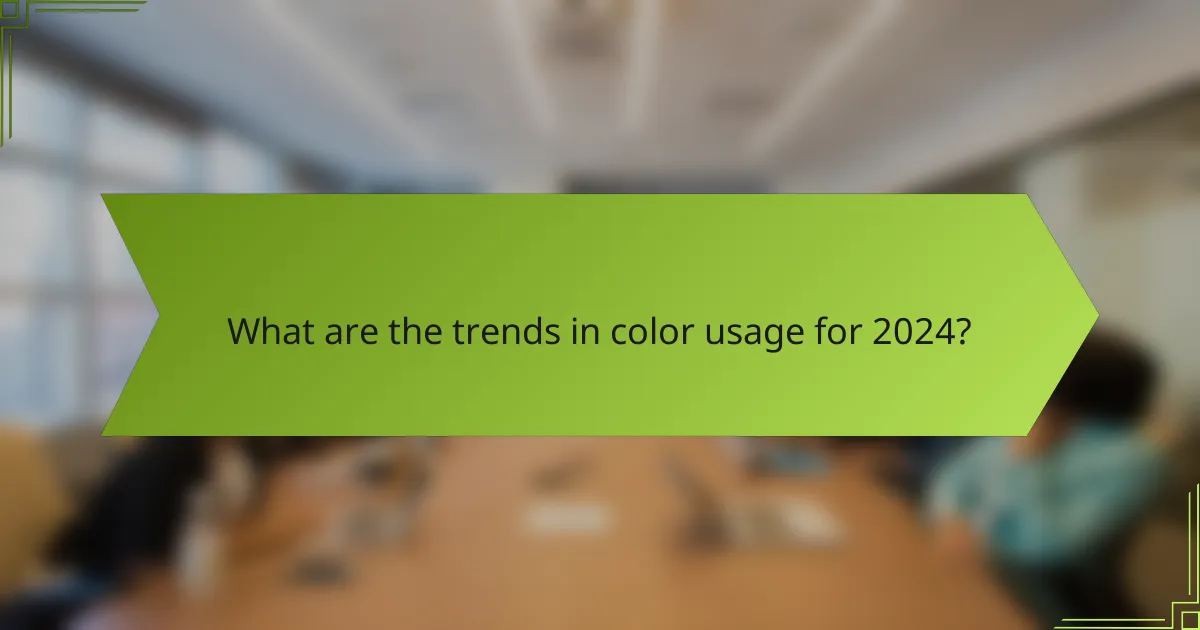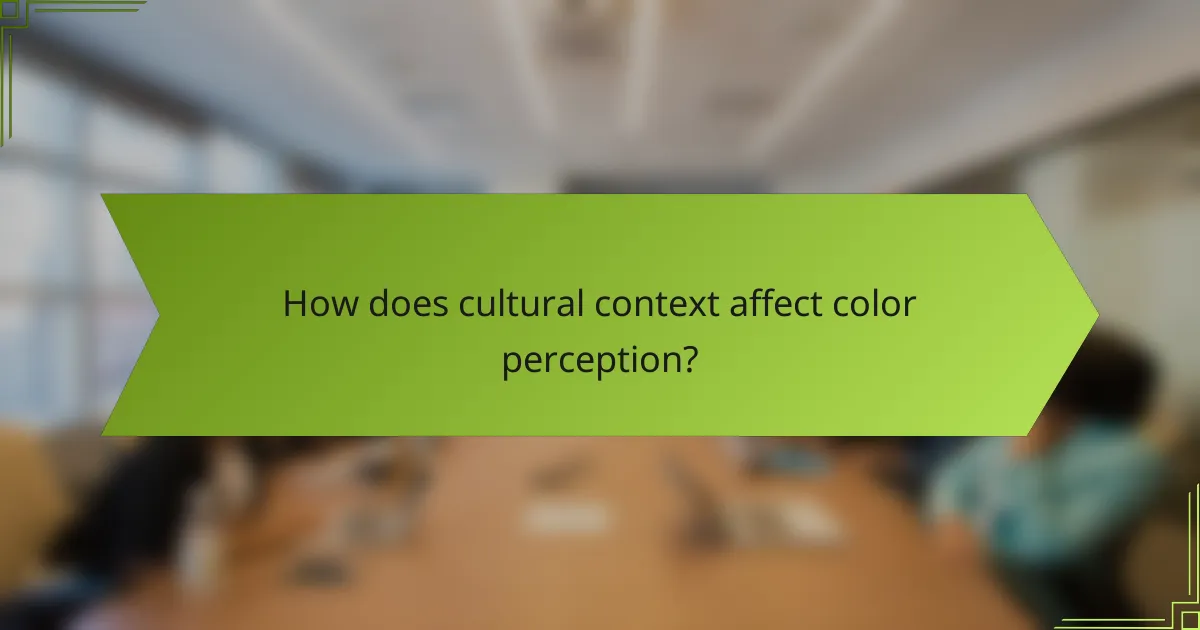Color theory is essential in marketing as it significantly influences consumer perceptions and behaviors. By strategically selecting colors, brands can craft distinct identities, evoke desired emotions, and effectively engage their target audiences, ultimately impacting purchasing decisions and enhancing customer loyalty.

How does color theory apply in marketing?
Color theory plays a crucial role in marketing by influencing consumer perceptions and behaviors. By strategically using colors, brands can create strong identities, evoke emotions, and engage their target audiences effectively.
Brand identity development
Colors are fundamental in establishing a brand’s identity, as they convey specific messages and values. For instance, blue often represents trust and reliability, making it popular among financial institutions, while red can evoke excitement and urgency, commonly used in sales promotions.
When developing a brand identity, consider creating a color palette that reflects your brand’s personality. Consistency across all marketing materials helps reinforce recognition and loyalty among consumers.
Emotional response enhancement
Colors can significantly enhance emotional responses, influencing how consumers feel about a brand or product. Warm colors like orange and yellow can create feelings of happiness and energy, while cooler colors such as green and blue can promote calmness and serenity.
To leverage emotional responses, align your color choices with the feelings you want to evoke. For example, a wellness brand might use soft greens and blues to instill a sense of peace, while a fast-food chain might opt for vibrant reds and yellows to stimulate appetite.
Target audience engagement
Understanding your target audience’s preferences is essential when applying color theory in marketing. Different demographics may respond differently to colors based on cultural backgrounds, age, and personal experiences. For instance, younger audiences may prefer bold and vibrant colors, while older consumers might gravitate towards more subdued tones.
Conducting market research can help identify the color preferences of your target audience. A/B testing different color schemes in campaigns can also provide insights into which colors drive higher engagement and conversion rates.

What are the psychological impacts of color in advertising?
Colors in advertising can evoke specific emotions and influence consumer perceptions, ultimately affecting purchasing decisions. Understanding these psychological impacts allows marketers to strategically choose colors that align with their brand message and target audience.
Color associations with emotions
Different colors are commonly associated with particular emotions. For example, red often signifies excitement or urgency, making it effective for clearance sales, while blue conveys trust and calmness, ideal for financial institutions. Marketers should consider these associations to create an emotional connection with their audience.
Additionally, cultural context can influence color meanings. In Western cultures, white symbolizes purity and simplicity, while in some Eastern cultures, it may represent mourning. Understanding these nuances is crucial for global marketing strategies.
Influence on consumer behavior
Color can significantly impact consumer behavior, often affecting their buying decisions within seconds. Research indicates that up to 90% of snap judgments about products can be based on color alone. Therefore, selecting the right color palette can enhance brand recognition and customer loyalty.
For practical application, brands should test color variations in their marketing materials. A/B testing different color schemes on websites or advertisements can reveal which colors resonate best with the target demographic, leading to improved engagement and conversion rates.

Which colors are most effective for specific industries?
Colors play a crucial role in branding and marketing, influencing consumer perceptions and behaviors across various industries. Understanding which colors resonate with specific sectors can enhance brand identity and improve customer engagement.
Blue for technology brands
Blue is often associated with trust, reliability, and professionalism, making it a popular choice for technology brands. Companies like IBM and Intel use blue to convey stability and innovation, appealing to consumers seeking dependable tech solutions.
When selecting blue shades, consider the context of your brand. Lighter blues can evoke a sense of calm and friendliness, while darker blues suggest authority and competence. Aim for a balance that aligns with your brand’s message and target audience.
Red for food and beverage
Red is a powerful color in the food and beverage industry, known to stimulate appetite and evoke strong emotions. Brands like Coca-Cola and McDonald’s utilize red to grab attention and create a sense of urgency, encouraging quick purchasing decisions.
When using red, be mindful of its intensity. Bright reds can create excitement, while deeper reds may convey warmth and comfort. Consider pairing red with complementary colors to enhance visual appeal and ensure your branding stands out on shelves or menus.

How can businesses choose the right color palette?
Businesses can choose the right color palette by aligning their colors with their brand identity and target audience. This involves understanding the psychological impact of colors and how they resonate with customers, ultimately influencing their purchasing decisions.
Understanding brand values
Brand values are the core principles that guide a business’s actions and decisions. When selecting a color palette, companies should choose colors that reflect these values. For instance, a brand that emphasizes sustainability might opt for earthy tones like greens and browns, while a tech company may lean towards sleek blues and grays to convey innovation.
To effectively communicate brand values through color, businesses can create a mood board that showcases potential color combinations. This visual representation helps in assessing how well the colors align with the intended message and emotional response.
Analyzing competitor color schemes
Examining competitor color schemes can provide valuable insights into industry trends and consumer preferences. By analyzing the colors used by competitors, businesses can identify what works well and what does not, allowing them to differentiate themselves in the market.
When analyzing competitors, consider creating a simple comparison chart that lists their primary colors alongside the emotions they evoke. This can help in determining gaps in the market where unique color choices can attract attention and create a distinct brand identity.

What are the trends in color usage for 2024?
In 2024, color usage trends are shifting towards vibrant combinations and a resurgence of earth tones. These trends reflect a growing desire for emotional connection and sustainability in design.
Vibrant color combinations
Vibrant color combinations are gaining popularity as brands seek to create bold and memorable identities. These combinations often include contrasting hues that evoke energy and excitement, appealing to younger audiences. For example, pairing bright pinks with deep blues can create a striking visual impact.
When using vibrant colors, consider the emotional response they elicit. Colors like orange and teal can stimulate creativity and enthusiasm, making them ideal for marketing campaigns aimed at innovation. However, balance is key; too many vibrant colors can overwhelm the viewer, so limit the palette to two or three main colors.
Earth tones resurgence
Earth tones are making a comeback as consumers increasingly prioritize sustainability and natural aesthetics. Colors such as terracotta, olive green, and muted browns resonate with a desire for authenticity and connection to nature. This trend is particularly relevant for brands in the eco-friendly and wellness sectors.
Incorporating earth tones can enhance a brand’s image by promoting a sense of calm and reliability. For instance, using a palette of soft greens and browns in packaging can convey a commitment to environmental responsibility. When designing with earth tones, aim for a cohesive look by combining these colors with natural materials and textures.

How does cultural context affect color perception?
Cultural context significantly shapes how individuals perceive and interpret colors. Different cultures associate specific meanings and emotions with colors, which can influence marketing strategies and brand messaging.
Regional color symbolism
Color symbolism varies widely across regions. For instance, in Western cultures, white is often linked to purity and weddings, while in many Eastern cultures, it symbolizes mourning and death. Understanding these associations is crucial for effective communication.
Additionally, colors like red can signify good fortune in China, but in South Africa, it may represent mourning. Marketers must research local customs to avoid misinterpretations that could harm brand reputation.
Global marketing considerations
When marketing globally, companies should adapt their color choices to align with local perceptions. A color that resonates positively in one country might evoke negative feelings in another. For example, blue is generally seen as trustworthy in many cultures, but its meaning can shift based on local context.
To effectively reach diverse audiences, brands should conduct thorough market research and consider cultural nuances. A practical approach is to test color palettes with target demographics before launching campaigns, ensuring that the intended message is conveyed accurately.

What tools can help in color selection?
Several tools can assist in color selection, making it easier to create visually appealing designs. These tools help users understand color relationships, generate palettes, and visualize how colors work together.
Adobe Color Wheel
The Adobe Color Wheel is a powerful online tool that allows users to create and explore color schemes. It provides options for various color harmony rules, such as complementary, analogous, and triadic colors, enabling designers to find combinations that work well together.
To use the Adobe Color Wheel, simply select a base color and choose a harmony rule. The tool will generate a palette based on your selection, which you can then save or export for use in Adobe applications. This is particularly useful for designers looking to maintain consistency across their projects.
Coolors.co
Coolors.co is a user-friendly color palette generator that simplifies the process of creating color schemes. Users can start with a random palette or input a specific color to generate complementary shades, making it easy to find the right combination for any project.
One of the standout features of Coolors.co is its ability to lock in colors while generating new ones, allowing for quick adjustments. Additionally, users can export palettes in various formats, including PDF and PNG, making it convenient for sharing and collaboration.
